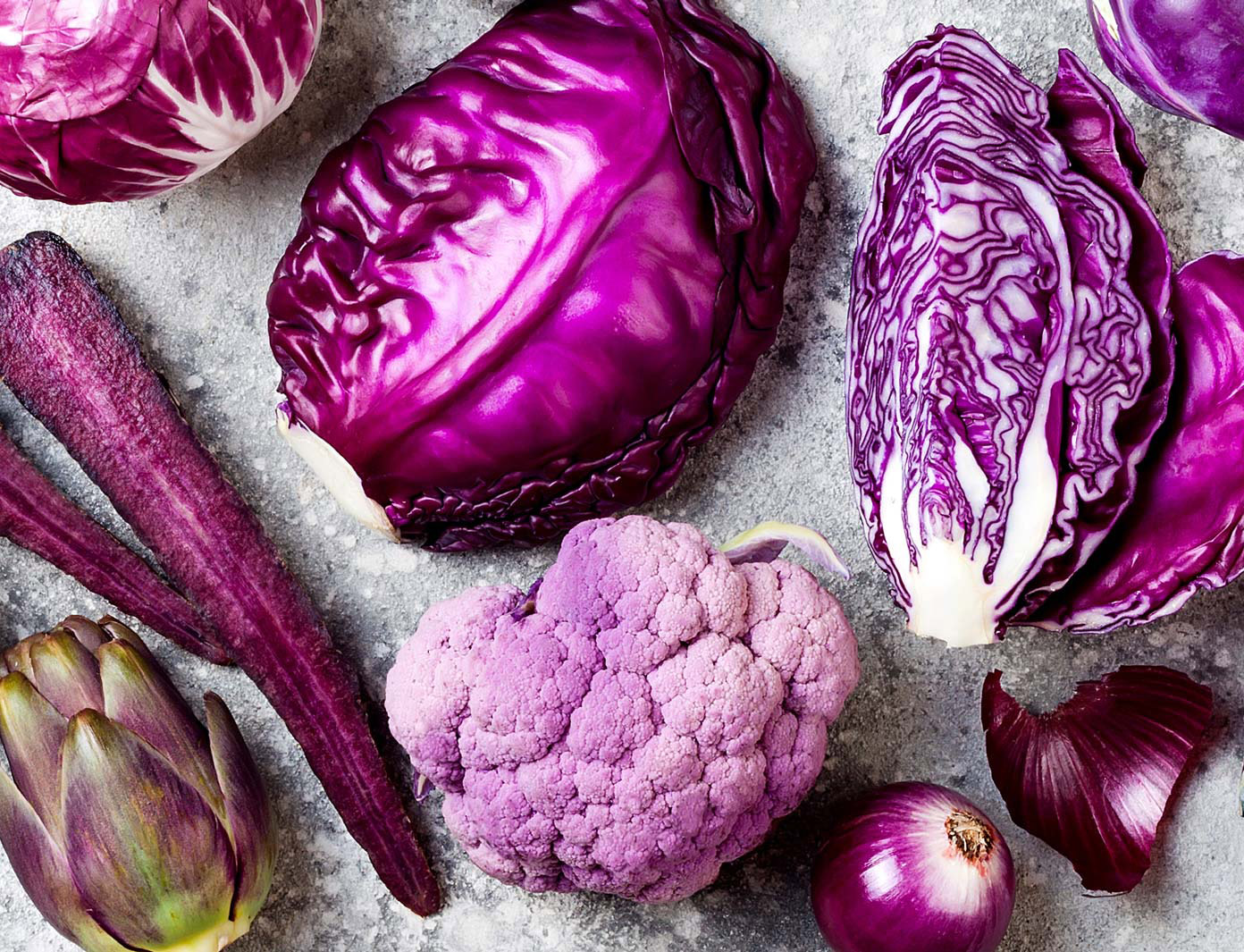
Purple vegetables may be pretty, but they also have powerful health benefits. See why and get mouthwatering recipes for 10 purple vegetables.
The color purple often symbolizes royalty and magic. And lately, purple vegetables have been popping up in more places.
You might have seen shades of purple in your grocery store or local farmers market — from vibrant purple cauliflower to the darker skins of purple potatoes.
But are these colorful veggies really worth seeking out and including in your regular meals? Should you become passionate about naturally hued purple foods?
Let’s Take A Look At Why Some Vegetables Are Purple
Purple foods are nothing new. In fact, you’ve likely been eating some purple vegetables since childhood.
And purple veggies have been around for a long time. Some vegetables are naturally purple, like eggplant.
And some are purple because farmers bred them to be colorful, like purple cauliflower. For thousands of years, humans have been tweaking the genetics of foods — naturally!
The process is called selective breeding. Unlike genetically modifying foods, it’s a slower process. Farmers select and grow crops with desired traits over time.
Should You Eat More Purple Vegetables?
The deep purple color of fruits and veggies is usually a sign these foods have a good dose of antioxidants.
A particular type of antioxidant called anthocyanins gives plants (including flowers) their vivid violet colors. (They also give red foods, like tomatoes, and blue foods, like blueberries, their colors.)
Anthocyanins protect purple vegetables from sunlight damage, cold temperatures, and other stressors. And they attract pollinators, like bees and butterflies.
They also can help protect and heal your cells from damage and protect you from many lifestyle diseases, such as cancer, diabetes, and cardiovascular and neurological diseases.
For centuries, people have used anthocyanins in herbal medicines (from dried leaves, berries, roots, and seeds).
And mixtures and extracts with anthocyanins have been used for a wide range of health conditions. Including everything from hypertension and liver disorders to kidney stones and urinary tract infections — and the common cold.
4 More Reasons to Eat More Purple Foods
Anthocyanins have a wide range of health-promoting benefits.
Science is showing that they are:
- Anti-Inflammatory — Anthocyanins have consistently shown to reduce inflammation. Why is this important? Because chronic inflammation is one of the underlying causes of many diseases of our times. Including Alzheimer’s disease, asthma, heart disease, allergies, type 2 diabetes, arthritis and joint disease, depression, some types of cancer, and obesity.
- Heart Healthy — Consuming a high amount of anthocyanins has been shown by a 2012 study published in The American Journal of Clinical Nutrition to improve many cardiovascular risk factors, including ability to lower artery stiffness and lower blood pressure.
- Anti-Cancer — Anthocyanins are associated with cancer prevention. For example, a 2013 study published in Molecular Nutrition & Food Research suggests that purple sweet potato may protect against colorectal cancer — the third most common cancer. And purple corn, though difficult to find, may have particularly potent cancer-fighting power. In research by Monica Giusti, PhD, purple corn showed significant blockage of colon cancer cells.
- Good for Your Brain — A 2003 study published in the Archives of Pharmacal Research showed the memory-enhancing effects of eating purple sweet potatoes. Other research points to the ability of anthocyanins to help prevent age-related decline in the nervous system. And anthocyanins are able to cross the blood-brain barrier and localize inside brain regions involved in learning and memory.
Researchers haven’t focused on anthocyanins as much as other flavonoids, so even more benefits could be found.
6 Purple Vegetables and How to Eat Them
Are you ready to play with more purple on your plate?
Even picky eaters might be tempted to try some of these colorful veggies.
1. Purple Cabbage — Also Known As Red Cabbage
You should be able to find purple cabbage fairly easily. And it’s one of the best healthy food bargains because it has the highest level of antioxidants per dollar.
Purple cabbage is also a cruciferous vegetable, so it gives you all the excellent health benefits of the brassica family — including fighting cancer, relief from depression, and more.
The leaves are thicker than green cabbage, but the taste is similar. You can easily substitute purple cabbage for green cabbage in recipes. You can even use purple cabbage to make visually appealing cabbage rolls with your favorite filling.
Purple cabbage goes well in salads. Try this Loaded Veggie Chopped Salad from Veggie Inspired.
This beautiful chopped salad is a perfect way to eat the rainbow. Almost every color of the spectrum is represented, including a heap of beautiful purple cabbage.
If you want to avoid sweeteners, you can leave the maple syrup out of the dressing. Or for an alternative, you can replace it with a soaked date and puree the dressing rather than whisk it together.
Or try this Red Cabbage Salad from Responsible Eating and Living. The homemade prune butter is easy to prepare and makes this salad extra special and delicious.
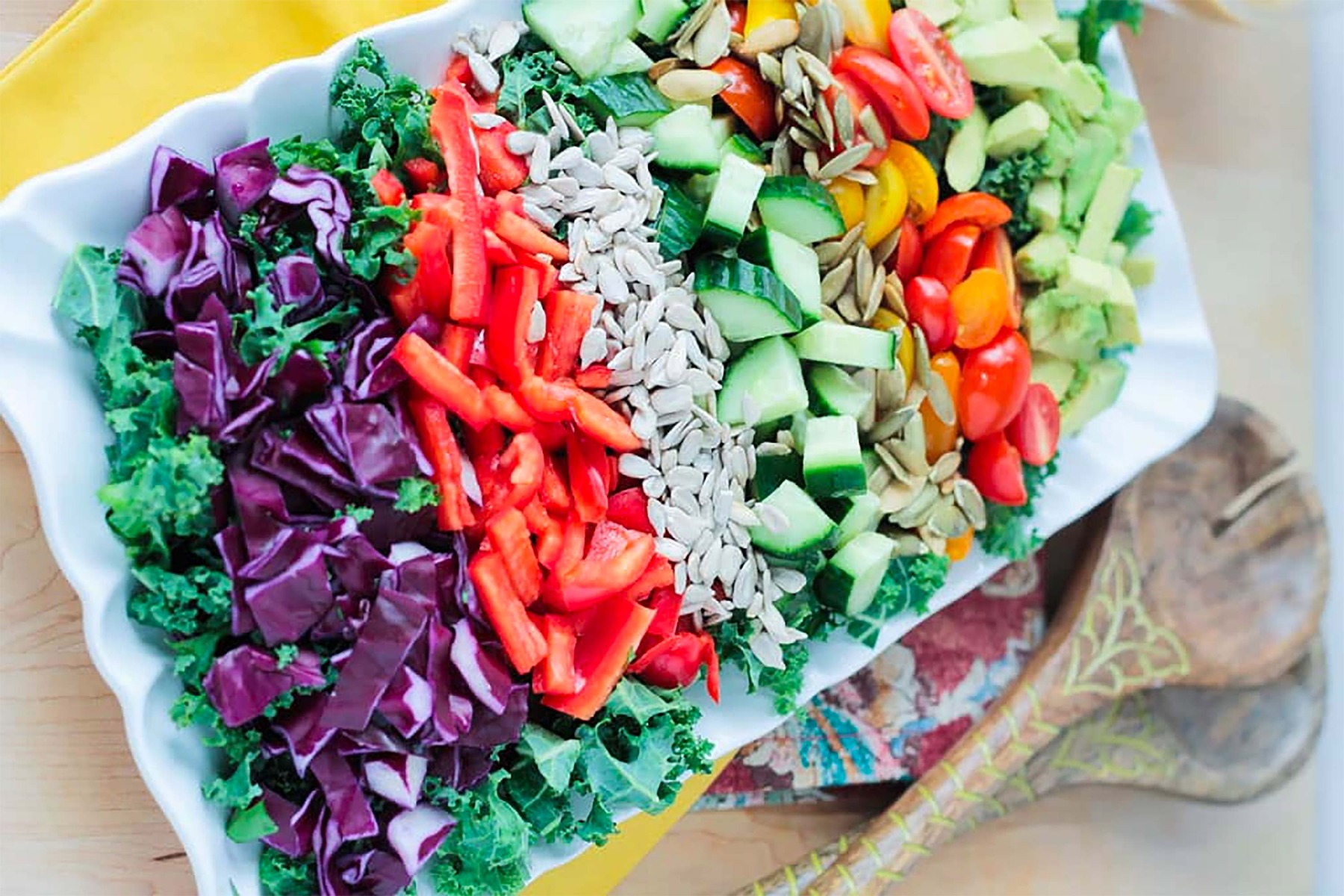
2. Purple Onion — You’ll Find Them Labeled As Red Onion
Next to purple cabbage, this is probably the most affordable and easiest-to-find purple vegetable out there.
A 2017 study published in Food Research International found that the combination of quercetin and anthocyanin makes purple (also known as red) onions powerful cancer-fighters.
You can use these onions in most recipes that call for sweet onion. The red onion may add color to your foods. For example, it will turn pickle brine hot pink.
Try this recipe for Easiest Quick Pickled Onions from What Great Grandma Ate.
Make some pickled onions and keep them in your fridge — they might even become one of the healthy staple foods you keep on hand all the time.
They add depth and flavor to many savory dishes. Add them to sandwiches in place of raw onions. Spoon them over chili. Or use them in your next Buddha bowl.
You can also try this Fresh Pineapple Salsa from Veggies Save the Day.
Fruit salsas are a versatile condiment. And they’re a great way to bring an abundance of flavor to any dish. You can scoop this pineapple salsa onto tacos, burgers, and salads.
3. Purple Carrots — Now Available in More Stores and Markets
You might be surprised to learn that carrots weren’t always orange.
They were domesticated in the Afghanistan region about a thousand years ago, at which time they were purple and yellow. Orange carrots didn’t arrive until the 1500s.
Purple carrots became available again because scientists discovered that purple carrots have special genes that orange carrots don’t. These genes make them more resistant to diseases and pests.
Purple carrots, ranging from dark violet to reddish purple, can have an intensely sweet and sometimes peppery flavor.
They are a beautiful addition to salads and veggie plates — they have bright orange, yellow, or white cores when you cut them. But you can also cook them and use them in a variety of recipes without having a big impact on the flavor.
Try this recipe for Za’atar Spiced Rainbow Carrots from Plants-Rule.
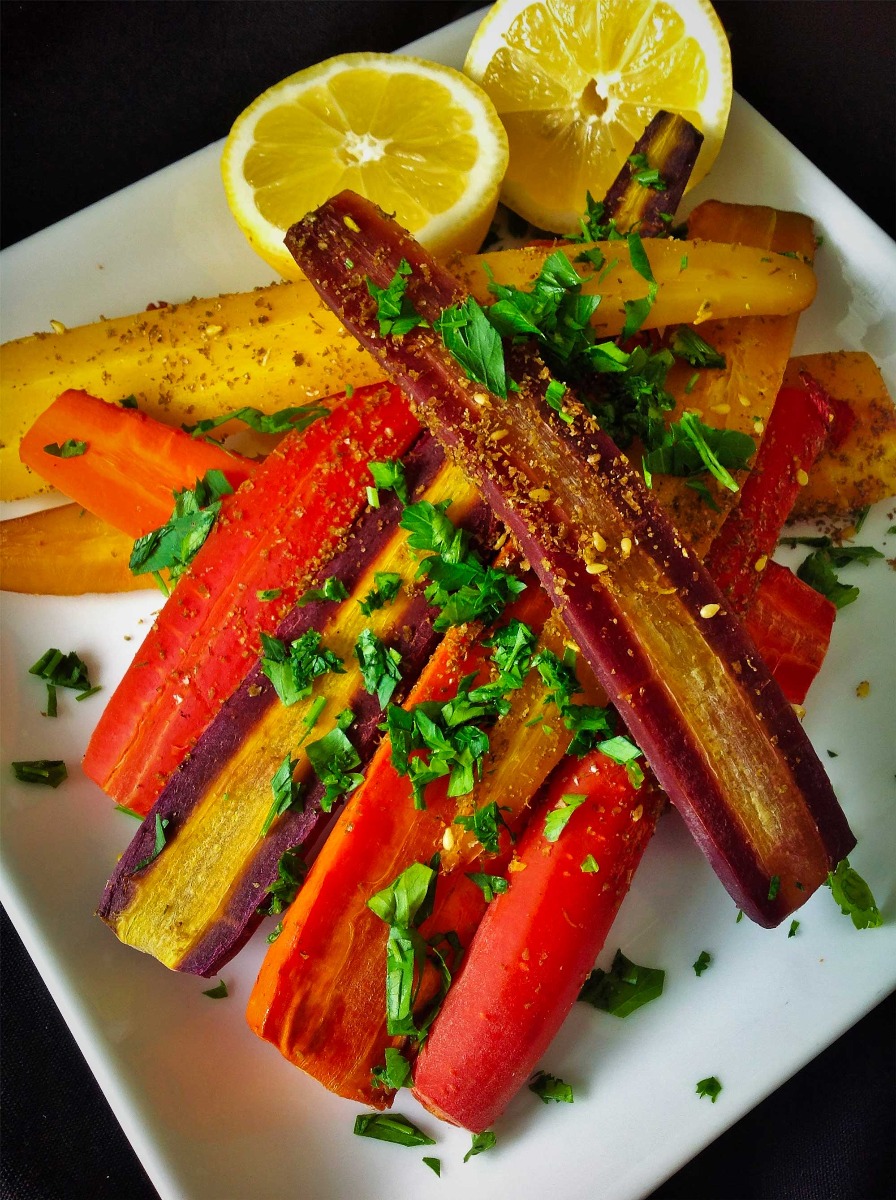
4. Purple Cauliflower — Bright and Beautiful
This purple vegetable is showing up on more and more store shelves, as consumer demand for purple foods has increased. (You might also see lime green and orange-colored cauliflower.)
Purple cauliflower has 15% more antioxidants than the world famous antioxidant-superstar, kale.
Purple cauliflower retains its color after cooking, and it’s said to have a milder flavor than white cauliflower, with a slightly sweeter, nuttier taste.
Cut it up and add it to salads for a delicious crunch.
Try this recipe for Ginger Raw Slaw with Beet and Cauliflower from Trinity’s Kitchen.
This salad has an irresistible red wine color. You can even turn this slaw into a main dish by serving it over quinoa or your favorite whole grain.
If you want to avoid sweeteners, you can leave out the raisins and the coconut nectar in the dressing. And be sure to choose organic or non-GMO versions of tamari or shoyu.
5. Purple Kale — More Intense Flavor Than Green or Black Kale
You may have seen purple kale, with its green leaves and purple stems. This veggie is grown for eating but also for ornamental purposes (many people find it stunningly beautiful).
Young, tender purple kale can be used in salads. And the more mature leaves are best when cooked (steaming works well).
Try this gorgeous Purple Kale and Pansy Salad from The View from Great Island.
When making this kale salad, be sure to remove the entire stem and spine from the leaves because they can be a little tough to chew. You can also massage the kale with the dressing with your hands to make it easier to chew.
If you want, you can use another sweetener in place of the honey, or leave it out. And to make it oil-free, leave out the oil.
6. Purple Asparagus — Sweeter And A Beautiful Violet Color
The purple variety is less bitter and slighter sweeter than green asparagus. Enjoy it raw in salads (sprinkle with lemon juice or vinegar to boost the color) or cooked (though it loses most of its purple color when heated.)
Try this Shaved Purple Asparagus Salad from Strength and Sunshine.
Strips of purple asparagus are perfect alongside buckwheat noodles (which can be found gluten-free) in an Asian-inspired vinaigrette.
If you want, you can replace the oil in the dressing with an extra teaspoon of the brown rice vinegar. Also, be sure to choose organic or non-GMO corn when shopping for this salad.
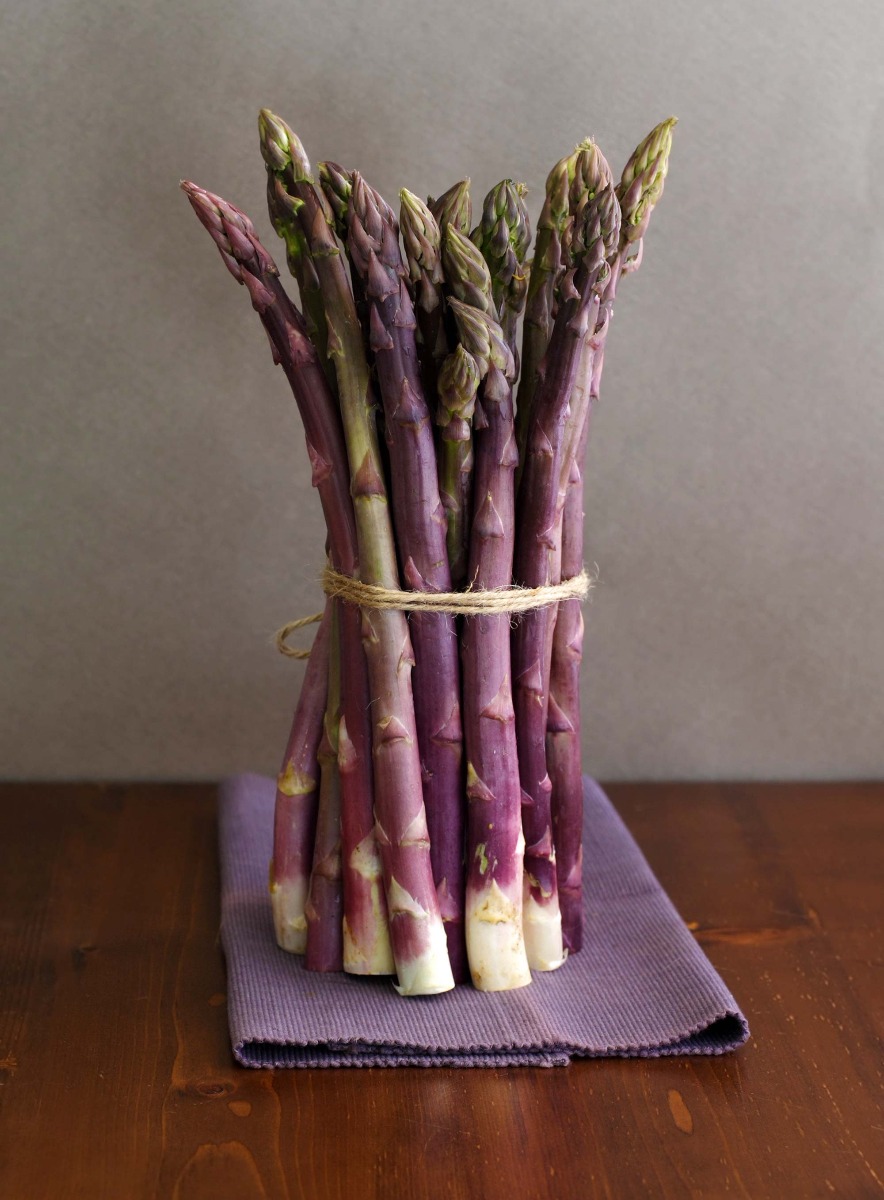






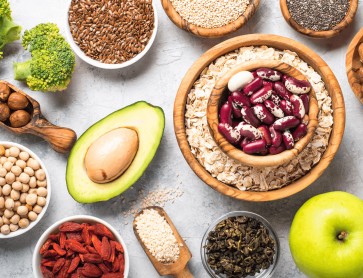
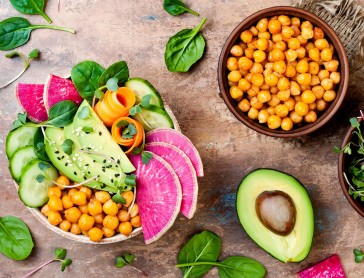
Validate your login
Sign In
Create New Account